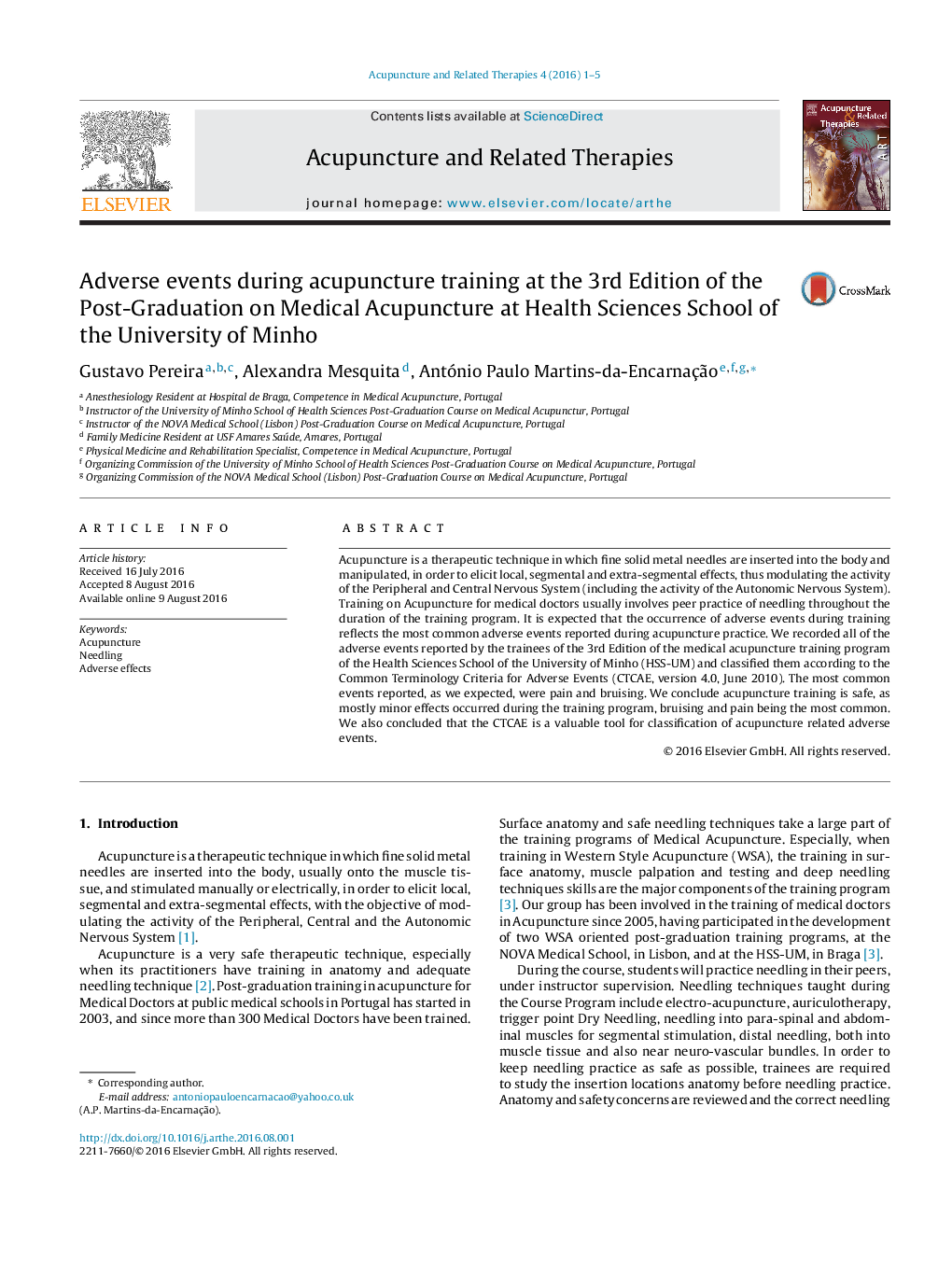| Article ID | Journal | Published Year | Pages | File Type |
|---|---|---|---|---|
| 5563758 | Acupuncture and Related Therapies | 2016 | 5 Pages |
Abstract
Acupuncture is a therapeutic technique in which fine solid metal needles are inserted into the body and manipulated, in order to elicit local, segmental and extra-segmental effects, thus modulating the activity of the Peripheral and Central Nervous System (including the activity of the Autonomic Nervous System). Training on Acupuncture for medical doctors usually involves peer practice of needling throughout the duration of the training program. It is expected that the occurrence of adverse events during training reflects the most common adverse events reported during acupuncture practice. We recorded all of the adverse events reported by the trainees of the 3rd Edition of the medical acupuncture training program of the Health Sciences School of the University of Minho (HSS-UM) and classified them according to the Common Terminology Criteria for Adverse Events (CTCAE, version 4.0, June 2010). The most common events reported, as we expected, were pain and bruising. We conclude acupuncture training is safe, as mostly minor effects occurred during the training program, bruising and pain being the most common. We also concluded that the CTCAE is a valuable tool for classification of acupuncture related adverse events.
Keywords
Related Topics
Health Sciences
Medicine and Dentistry
Anesthesiology and Pain Medicine
Authors
Gustavo Pereira, Alexandra Mesquita, António Paulo Martins-da-Encarnação,
